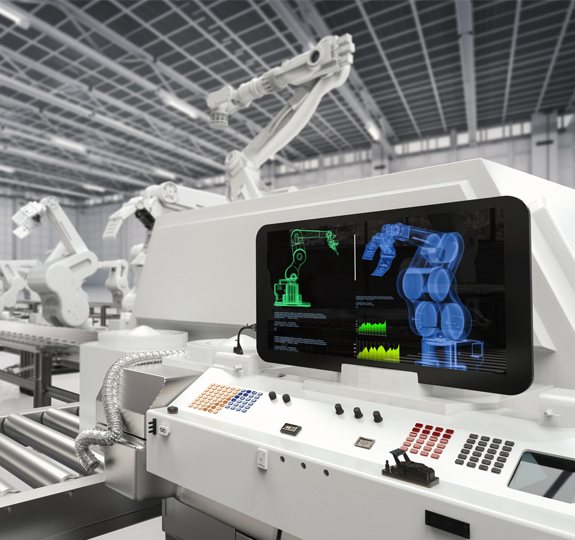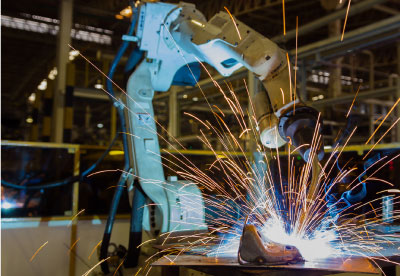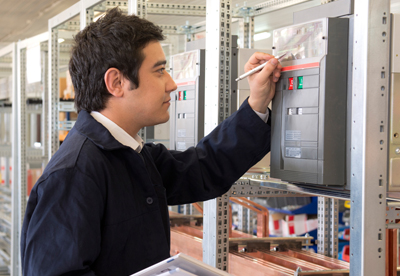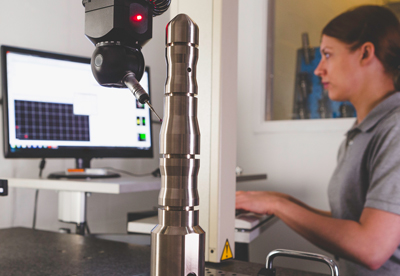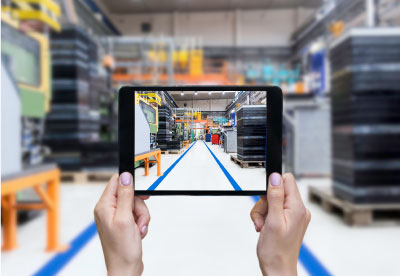Steel Industry require to outsource their IT operation to global IT partners to help them transform to cope up with changing business need, shrinking margin and resource skill gap.
Three rapidly moving developments are shaking businesses across the world: cloud technology, mobile adoption and data proliferation. Core manufacturing processes have been dramatically impacted by the three. Manufacturing, always a little tradition bound, is suddenly witnessing brisk change.
The Manufacturing industry is realizing benefits of mobile applications in driving productivity and optimization, reducing costs, improving efficiencies and enabling better field service, however, compared to other industries, enterprise mobility is not the top priority for most executives in the manufacturing sector.
Chemical companies are increasingly leveraging the Cloud to lower costs and resource requirements, enabling their IT departments to focus on adding value to their businesses.
Smart factories are forging the future of manufacturing by using real-time analytics - all via Process Monitors! The tool allows Yield Analytics to crunch massive data sets to a critical few that are essential to the shop floor and take pre-emptive corrective action
Using Blockchain to alleviate the challenges of Airworthiness Certificate Tracking
Ways to achieve right content in a B2B environment. The write-up places importance on personalization of content.
Manufacturers are re-building their business to align with their customer journeys better, so that they can anticipate what their customers will need next.
Digital Twin is a virtual model of a physical asset that mimics the behavior and operation of its physical counterpart.
Industry 4.0 has everyone hopping onto the digital bandwagon, jostling to stay ahead of their competitors.
Don't just digitalize your service to customers, make it intelligent!
Artificial Intelligence (AI) will be changing the way we look at manufacturing value chain.
Millennials& Generation Z constitute about 2/3rd of the world’s population. They emphasize on experience and therefore companies now have a renewed focus on Customer Experience (CX).
The New Industry 4.0 Revolution
We are in the midst of the Fourth Industrial Revolution that’s blazing a digital trail across the manufacturing industry.
A decade ago, the idea of ride sharing was born and the concept of access over ownership disrupted traditional business models.
While direct to consumer industries such as retail have been abuzz with the need to deliver better customer experience (CX) for a while, it’s not just limited to them anymore
Digitalization is transforming the manufacturing industry, and no one wants to be left behind.
Manufacturers are talking about developing manufacturing and delivering customer-centric products since the beginning of the Era of Manufacturing.
Reimagine the power of AI for increased value to your business
Safety on the shop floor is a key area that manufacturers need to monitor, from a humanitarian as well as a government regulatory compliance standpoint.
The word ‘Weapon’ is generally associated with something destructive but was invented by our ancestors as a means to save them from unexpected events and attacks from enemies.
If there's one thing that manufacturing leaders have come to realize about Industry 4.0, it's that the future means being on the cloud, first and foremost.
Earlier this year, UPS and Waymo announced their partnership to begin self-driving package pickup in Arizona. This partnership is aimed at improving customer service and network efficiency. Waymo’s autonomous vehicles will shuttle packages from stores to UPS facilities.
If flying cars don’t do it, mobility’s future will blow your mind!
The current COVID-19 pandemic has had a significant impact on business. Emerging out of this crisis will be a journey and we will have to continuously observe, process new information and improvise to be relevant to our customers.
Cloud delivers the visibility, agility, and resiliency you need to mitigate present and future challenges
As manufacturers start rebuilding for the future, they need to think Digital First and People First
The unprecedented crisis has given manufacturers the opportunity to rethink strategic priorities, digitalize their processes, and transform business models to prepare for the new normal
The first evidence of the “wheel” dates back to 3,500 B.C. During that era, it served as a potter’s wheel. The idea gradually evolved, and in the next few hundred years, it found its use in chariots. Developments thereafter are well documented – from motor vehicles to aeroplanes to machines, and practically everywhere else. We never stopped innovating after inventing the wheel.
Gartner predicts that by 2025, 80% of enterprises would be migrating away from their on- premise hosted data centers to cloud, as part of their Data Center (DC) Exit strategy. However, it is important to clearly define the right cloud strategy to accelerate cloud migration and the transformation journey.
With the effects of the pandemic already evident, the world as we know it has changed overnight. Running against time, enterprises are now faced with the predicament of having to create new business models, accelerate their fulfillment through new channels, and compete with a mix of companies that never featured on their SWOT analyses before.
Not long ago, manufacturing’s primary concern was about making products that worked well and looked attractive. Today, manufacturers are challenged to look at their task from a much broader perspective.
The servitization model and Industry 4.0 manufacturing initiatives go hand in hand. Here are 3 benefits servitization brings manufacturers.
In our second article, we cover the SAVE Framework’s A principle: Automation & AI. By strategically leveraging technology like automation and Artificial Intelligence, manufacturers can maintain operations amid global crisis and disruption.
In our first article, we cover the SAVE Framework’s S principle: Strategy. By implementing digital solutions that provide long-term impact for business, manufacturers can strategically maximize captive monetization while offsetting risk.
In our third article, we cover the SAVE Framework’s V principle: Visibility. By leveraging technology to create better organization visibility, manufacturers can improve processes, lower costs, and protect their bottom line.
In our final article, we cover the SAVE Framework’s E principle: Enterprise IT. By creating and IT environment that’s adaptable and robust, organizations can successfully deliver services their employees need to remain connected and productive, even amid crises.
There have been significant disruptions in supply chains due to the COVID-19 crisis. If we look at the past six months, we can see extreme cases of supply and demand shocks. The International Monetary Fund has estimated that the global output will shrink by 4.9 percent in 2020.
First, some good news. Over the last couple of months, the manufacturing industry has witnessed the beginnings of recovery, although we are well aware that the industry has been badly hit and disrupted by the pandemic.
Organizations are increasingly adopting Microservices to benefit from evolving cutting-edge technologies
COVID-19 became the brutal left hook that knocked out the manufacturing sector in 2020. It was an uneven fight. The pandemic disrupted supply chains, shrunk demand for high-value goods – such as primary metals, industrial machinery, and automobiles – and labor shortages completely “manu-fractured” an already-struggling sector.
Two key elements in the Metals industry have undergone dramatic change due to COVID-19: Capacity and cost
COVID-19 put the brakes on the automotive industry. While recovery could take years, the change the pandemic is driving has been long-awaited
Manufacturing smart and connected products requires a Smart Factory.
The needs of each consumer and each business are unique. Satisfying these needs quickly, efficiently, and at an optimal cost is the holy grail of discrete manufacturers.
According to Bloomberg, the market for electric vehicles is growing at a rate of 33.6% (CAGR) with sales expected to exceed $3 trillion by 2027.
Pandemic has accelerated the digitalization of automotive sales
Digitalization to play a vital role in driving manufacturers’ sustainability agenda, making green technology a paradigm for future manufacturing enterprises
A modern, smart approach to service management, enabled by digital technologies and measured by customer lifetime value, is key to achieving sustainable growth within the service business
The transition to green metals is imperative for steel and aluminium manufacturers to achieve their net climate goals and enhance their competitiveness.
One of the key advantages of Indian manufacturing used to be low labor costs. This is no longer the case, as advanced economies are increasingly automating routine low-skill tasks, and wages are gradually rising in India.
The big question for manufacturers today is not so much what to digitalize but when to digitalize to maximize value.
The metaverse is leading to a paradigm shift in how consumers, suppliers, partners and employees interact to create, buy, sell, spend, learn and collaborate....
Download the whitepaper by HBR analytics services in association with Wipro to know more about manufacturing services in 2025, driving superior customer experience
As manufacturers advance on their Industry 4.0 journeys, industry leaders see both opportunities and challenges when it comes to implementing mass customization at scale.
Process manufacturers are facing a slow-building tension driven by two central factors: pressure to maintain margins amid rising costs and deteriorating operating KPIs (first pass yield, throughput, productivity, etc.) in multiple pockets of the industry.


